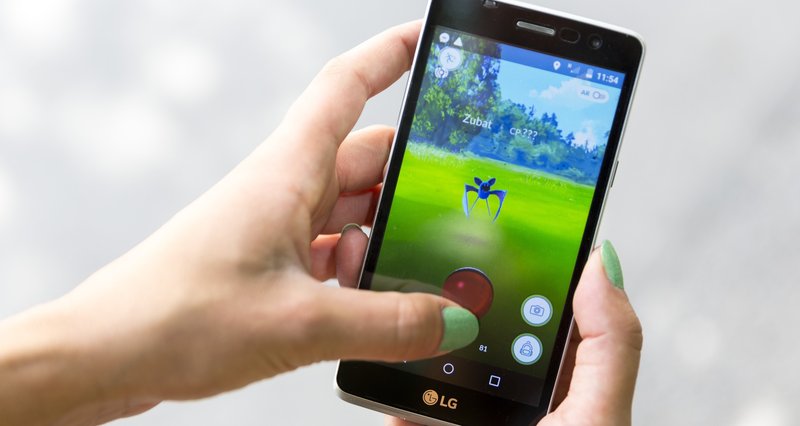(c)iStock.com/Cylonphoto Opinion A recent study conducted and released by MobileBridge indicates that mobile marketing tools, though accepted by the marketing community, have been slow to receive updates and delayed in expanding their current mobile apps. I’m not suggesting “Call of Duty” to sell underarm deodorant, but games designed and defined from the onset to benefit the brand with relevant stories, content, and contests that support the marketing strategies of the brand and will start a dialogue and engage the consumer or prospect. I suggest choosing ‘Brand-Based Interactive Narratives’, or BBINs, for a working title, and determining which of the three gaming level definitions below apply to your needs. I know of no “official” offering of marketing based gaming based definitions, but perhaps some should be developed.) Level one: The game of non-response. These involve greater detail, more like a true video game but primarily designed to instruct, exchange knowledge, and, in some of the better examples, gather user information. Sailing games, car-driving games, or travel and tourism games are examples that fit within the definition of level-two gaming. The goal and objectives of a brand-based gaming solution are not only sales related According to the MobileBridge study, engagement is a top goal of mobile marketing, but the study analysis poses the question of whether active users are active enough. A properly developed and designed brand game will allow the data to counter those NO’s with valid reasons to say YES and provide “levels” to the game that will allow the “NO” consumer to easily become a YES or perhaps a MAYBE consumer – a MAYBE consumer is potentially a future yes consumer. Next steps and summary A brand or brands need to step forward to break the mold of traditional marketing and commission a game to be developed that will include a story arc, define the rising and fall of brand- and consumer-based events, and develop a narrative that contains multiple layers and is designed to gather data both overtly and covertly.

(c)iStock.com/Cylonphoto
Opinion A recent study conducted and released by MobileBridge indicates that mobile marketing tools, though accepted by the marketing community, have been slow to receive updates and delayed in expanding their current mobile apps. It seems that mobile technology is way ahead of marketing applications and perhaps ahead of the understanding of this potentially beneficial technology as well.
What does that mean to me, as a supporter of integrated marketing and omni-channel marketing? If the past is any indicator of future trends, once any brand stops, delays, or hesitates to update a media, that media may be in for a tailspin and possibly a crash-and-burn ending. Why? Because slow updating means that the (actual or perceived) ROI/ROR of the tools may be in question. Or the effectiveness and response to the customer journey/experience may not be fitting the defined goals and objectives of the tool and supporting the marketing goals and objectives. This mindset has been trending with clients and their creative marketers so that the data gathering is out of whack and not acceptable if not offered by companies such as Facebook and Google.
Is something better on the horizon?
If we all agree on some of the key tenets of mobile marketing strategy (as discussed and evaluated by MobileBridge), we would recognise that the main marketing purposes are engaging employees, attracting new prospects and establishing dialogue with existing customers, while the primary goals are building customer loyalty, engaging customers, and, of course, driving revenue.
At a DMA event nearly five years ago, a discussion topic was: ‘This is the year for mobile marketing’. Perhaps not?
Then why must we look for something new, something rising above the marketing horizon? The “why” is simple: Marketers are always looking for the “Next Big Think,” which, in my opinion, may be a serious error in media use and selection.
All of this is fine, but is mobile coming up short because it is a linkage media and not a closing media—despite the fact that mobile firms argue that mobile by its very nature is an action-based, closing-the-sale media?
Long live game-based marketing?
Consider the concept of developing and using marketing-based video games for your brand. I’m not suggesting “Call of Duty” to sell underarm deodorant, but games designed and defined from the onset to benefit the brand with relevant stories, content, and contests that support the marketing strategies of the brand and will start a dialogue and engage the consumer or prospect.
How do we go about creating and using such games? First, to move forward we need to define what our game-based market is and perhaps offer a new more serious, friendly and less entertaining description. I suggest choosing ‘Brand-Based Interactive Narratives’, or BBINs, for a working title, and determining which of the three gaming level definitions below apply to your needs. (Note: These are my definitions. I know of no “official” offering of marketing based gaming based definitions, but perhaps some should be developed.)
Level one: The game of non-response. Simple non-responsive (in most instances) games; toy-based gaming interfaces such as those used by restaurant chains or retail locations to entertain or get people involved in the offerings of the locations. These generally have limited response, and few are action oriented. Most ask for contact information but ask in a passive way.
Level two: The game of instruction. These involve greater detail, more like a true video game but primarily…

COMMENTS